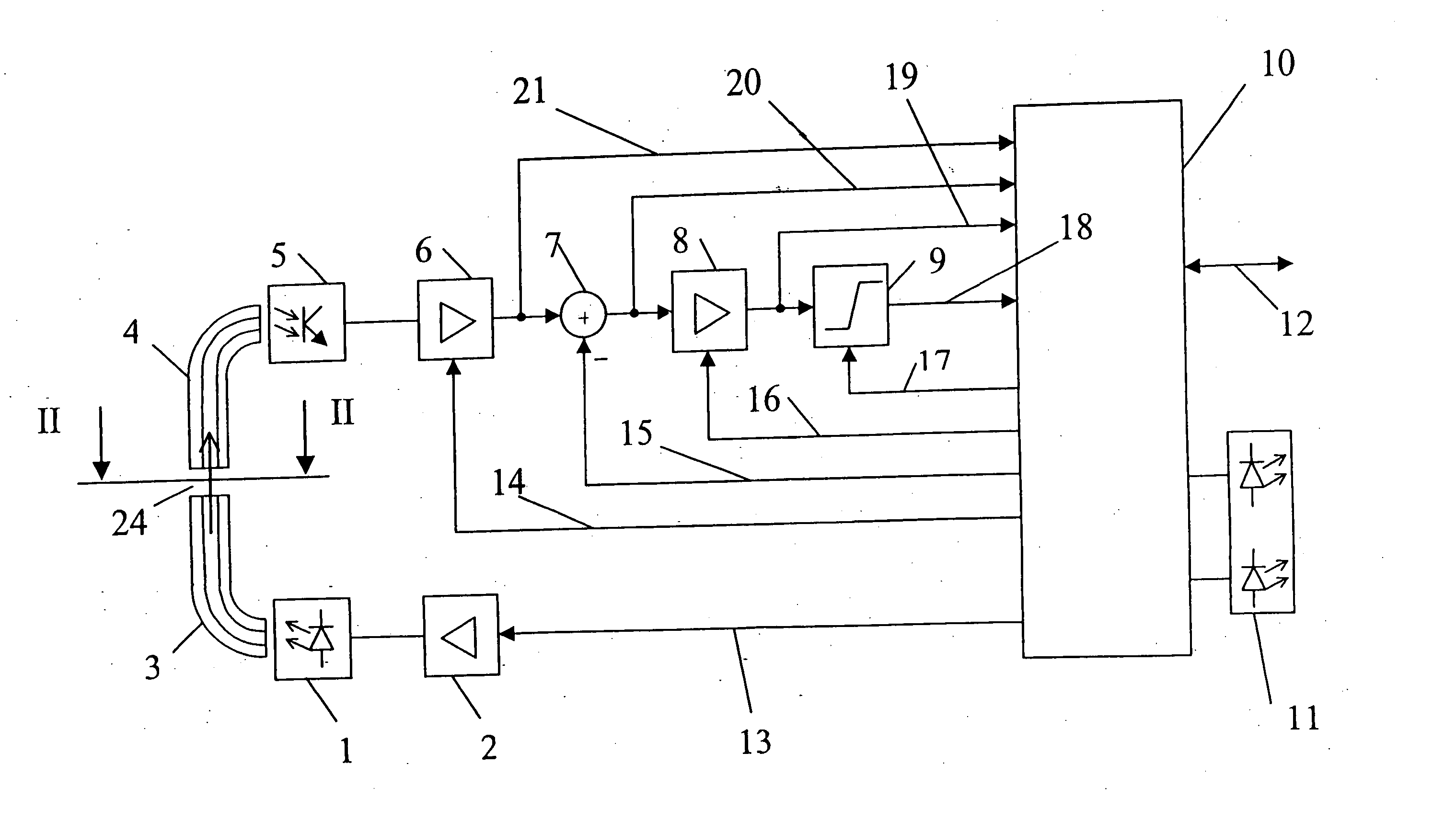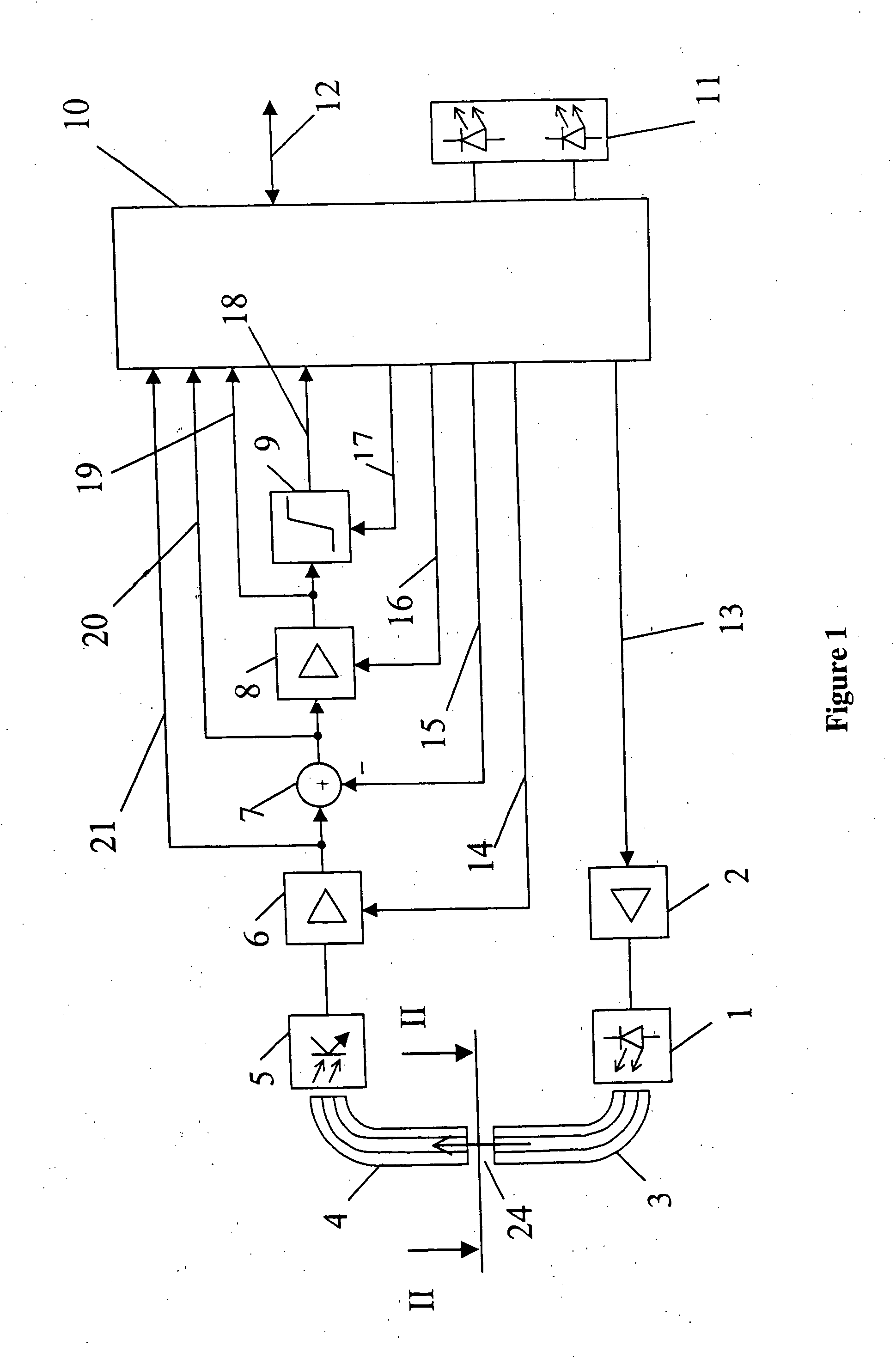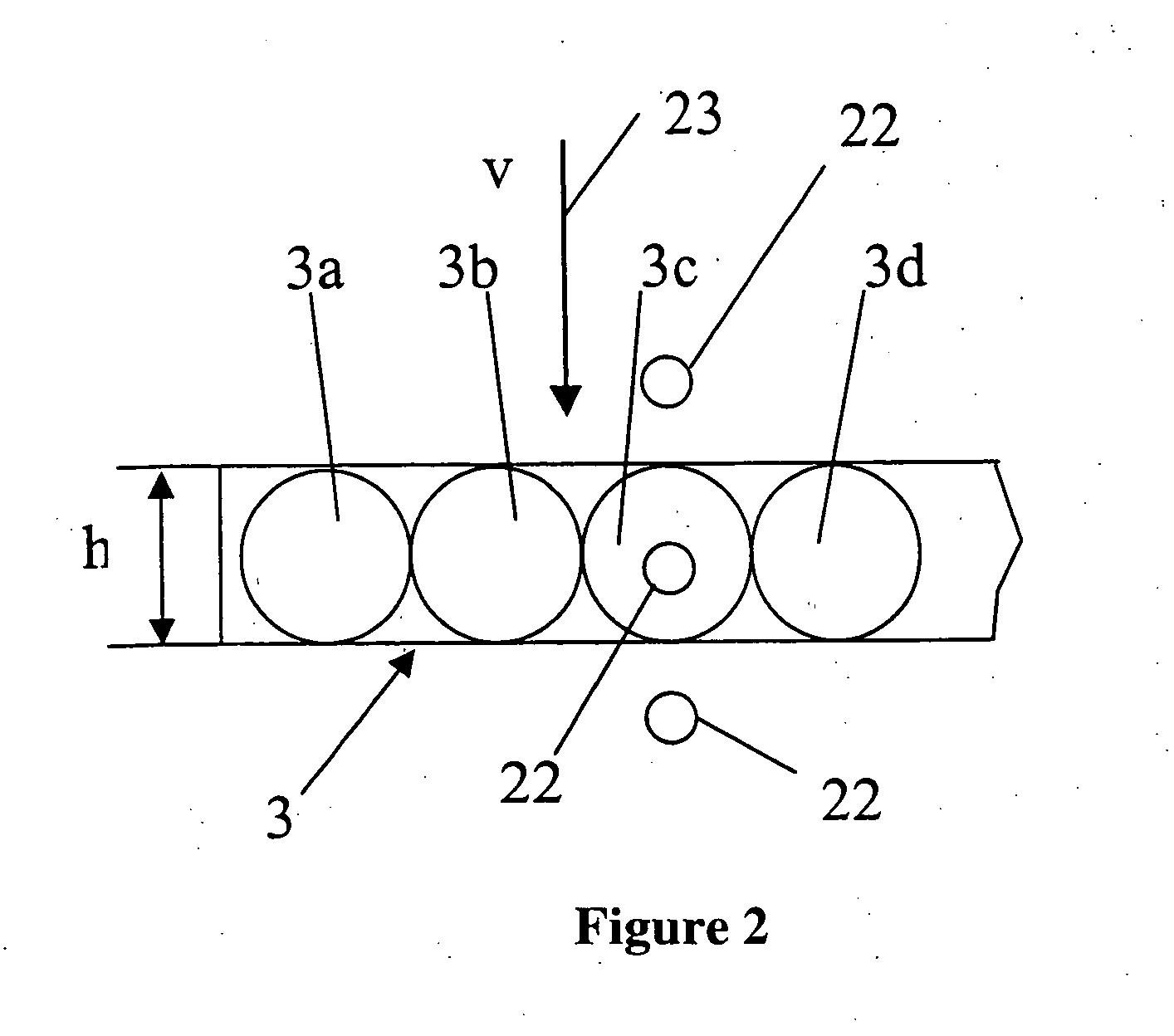Device to detect individual moving objects having very small dimensions
a technology of moving objects and detectors, applied in the direction of optical radiation measurement, photometry using electric radiation detectors, instruments, etc., can solve the problems of large installation space, large measurement volume of photoelectric sensors without additional beam-forming optics that are available on the market, and large diameter of optical paths to detect very small individual objects with a high repeat rate and short object spacing,
- Summary
- Abstract
- Description
- Claims
- Application Information
AI Technical Summary
Benefits of technology
Problems solved by technology
Method used
Image
Examples
Embodiment Construction
[0017] A possible application of the invention could be seen in counting drops of liquid, particularly drops with a diameter in the sub-mm range. Such small drops can be produced by a microdispenser. The microdispenser shoots out drops having a diameter of less than 100 μm from a jet. For many applications, it is necessary to count every single drop that leaves the microdispenser. With a drop speed of approx. 2 m / s and a repeat frequency of 2000 Hz to 4000 Hz, counting the individual drops is made difficult. However, the device according to the invention solves this problem without difficulty.
[0018] As can be seen from FIG. 1, the device comprises a light beam transmitter 1, such as a light-emitting diode or a laser diode that is controlled by a driver 2. The light is fed to a first bundle of optical waveguides 3 whose inputs are connected to the light beam transmitter 1. The input cross-section of the bundle of optical waveguides is adjusted to the cross-section of the light beam ...
PUM
 Login to View More
Login to View More Abstract
Description
Claims
Application Information
 Login to View More
Login to View More - R&D
- Intellectual Property
- Life Sciences
- Materials
- Tech Scout
- Unparalleled Data Quality
- Higher Quality Content
- 60% Fewer Hallucinations
Browse by: Latest US Patents, China's latest patents, Technical Efficacy Thesaurus, Application Domain, Technology Topic, Popular Technical Reports.
© 2025 PatSnap. All rights reserved.Legal|Privacy policy|Modern Slavery Act Transparency Statement|Sitemap|About US| Contact US: help@patsnap.com



